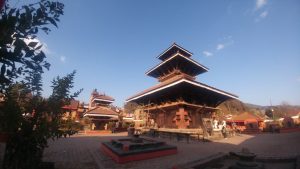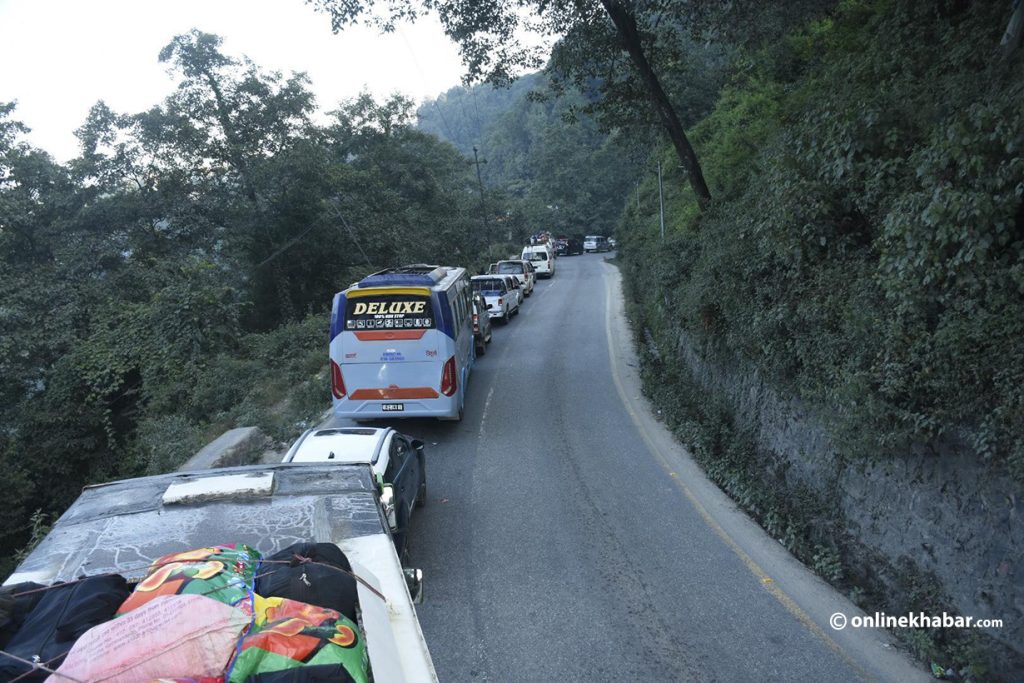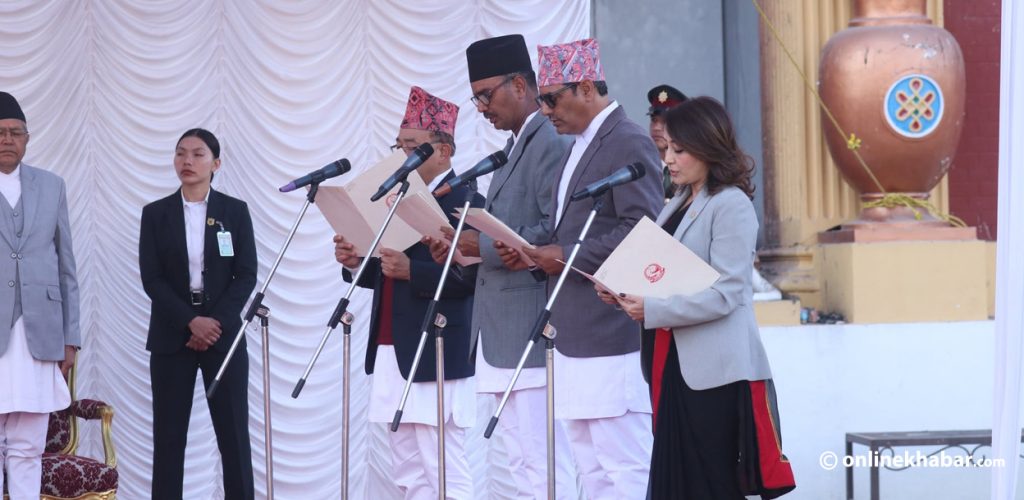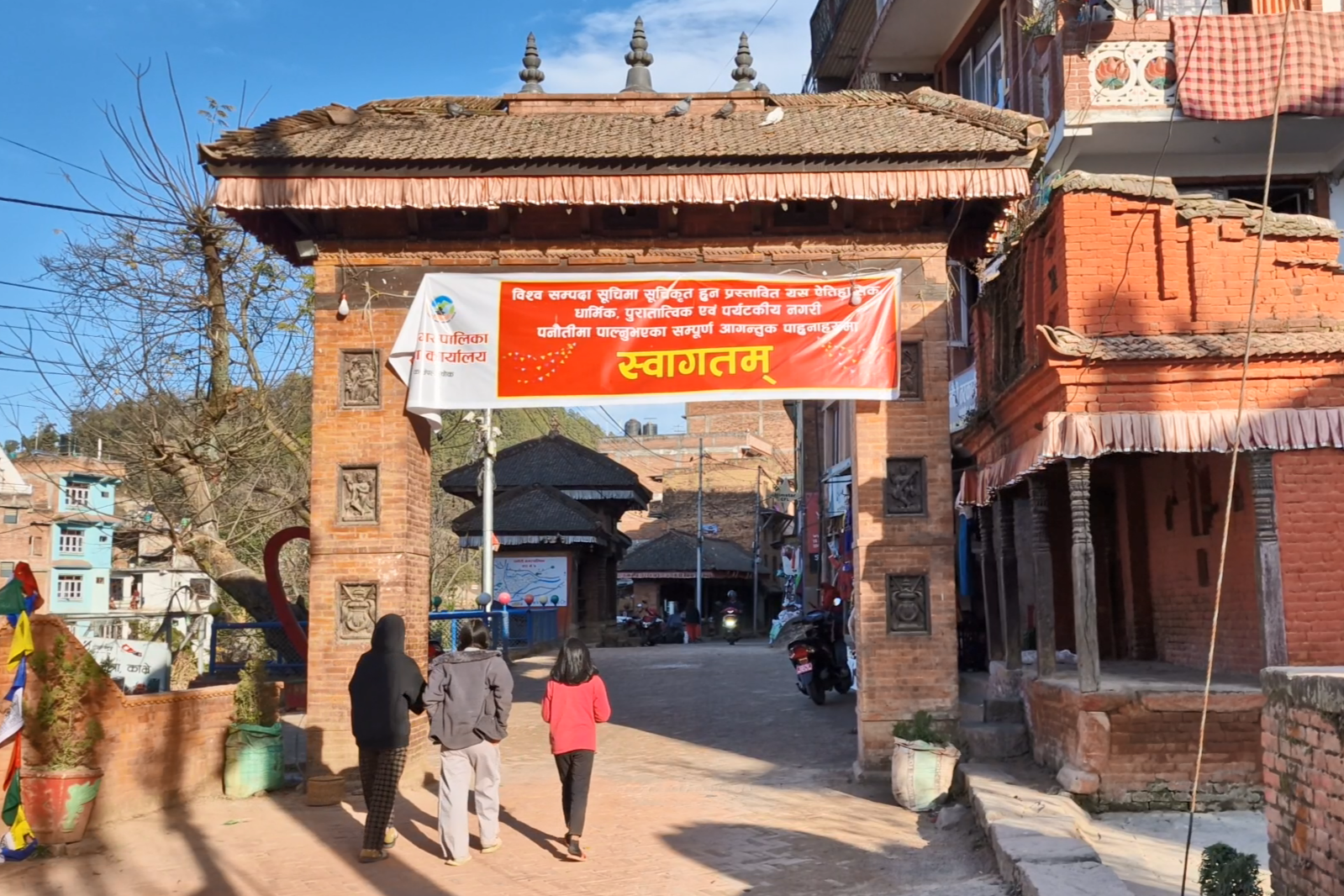
In April 2001, the Nepal Gazette declared Panauti a protected monument zone, under the Ancient Monument Preservation Act, 2013. By doing so the aim was to back Nepal’s proposal, sent in 1996, to enlist the old Newa town along with landmarks such as the Rosi-Punyamati confluence, the Triveni ghat, Indreshwar Mahadev temple, and Bramhayani Temple, among others as UNESCO World Heritage Site.
“There were 15 proposed sites in total,” says conservationist Rabindra Puri. “But even after two decades, we have not been able to enlist any one of them.”
Now, after 27 years, things are reaching their final phase. Residents, in collaboration with the government, have recognised the importance of this achievement. They have worked tirelessly to transform their long-standing dream into a reality, bringing Panauti one step closer to being listed as a UNESCO World Heritage Site.
The road to an official UNESCO declaration was a lengthy one though. And it is still anticipated that it could take up to two years before the final decision is made as UNESCO will weigh various factors including cultural significance, preservation efforts, and community engagement. So how was all of the possible and what does the future hold for the ancient town of Panauti?
“Everyone had work hard to make this dream a reality,” says Ram Sharan Bhandari, mayor of Panauti Municipality. “The restoration work is proceeding diligently. We hope we get to hear the good news soon.”
Perilous pathway
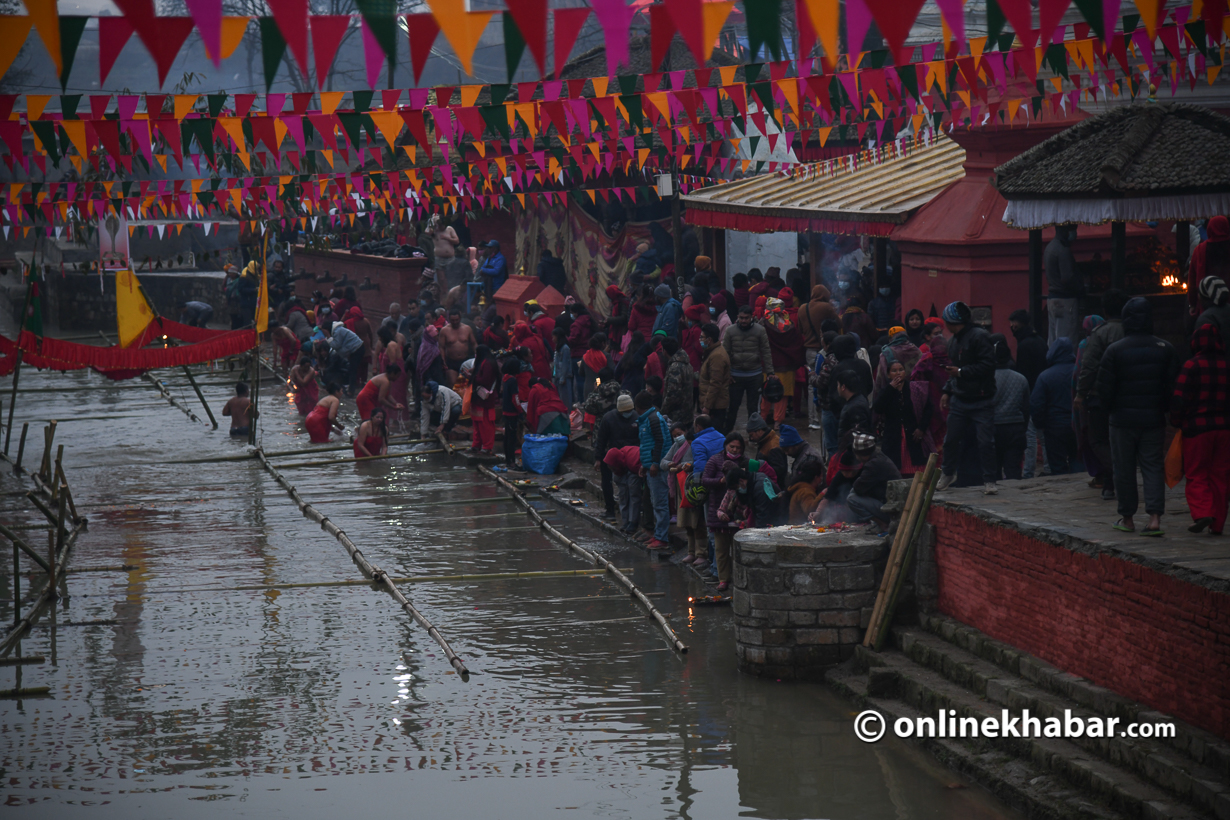
The road to get here has not been easy. Puri, who has worked extensively in Panauti says most of the old monuments and points of interest (POIs) required individual attention and that is what stretched the nomination process.
“The staggered approach to working on each site meant it took nearly two decades for us to get here,” he says.
Political unrest in the country also did not help as it affected the preservation effort along with the documentation process.
“This meant the locals could not be as active as the local government was not proactive enough,” said Bhandari.
The lack of skilled artisans to work on the heritage sites posed another issue.
“We faced issues every step of the way,” said Puri. “The file getting stuck at the Ministry of the Culture and the Council of Ministers did not help our cause either.”
Recognising the gravity of the situation, Puri’s team of dedicated individuals together with the municipality stepped up to the plate.
“Three of our employees worked tirelessly, burning the midnight oil, to compile all the necessary paperwork and maps per the Nepal Gazette,” says Puri.

The lack of comprehensive research and documentation necessary to support the nominations has been another major obstacle.
“We put together almost everything, the physical documentation of sites, temples, and their geographical distribution. There was no uniformity in the documentation. But we have everything we need now,” says Puri.
With this goal in mind, the local community has rallied together to ensure the Indreshwar Mahadev temple is restored to its former glory. Puri says that the documentation work will be completed by September, while Bhandari pledges to finish his side of the administrative process within three months.
With the new mayor’s coordination, Puri’s team have made efforts to update the dossier, which will undergo a thorough review process to ensure it meets UNESCO’s criteria and guidelines for World Heritage nomination.
The final decision regarding the inscription of a site is made by the UNESCO World Heritage Committee during its annual sessions.
“The official announcement, however, will take at least two years,” says Puri.
Why should Panauti be enlisted?
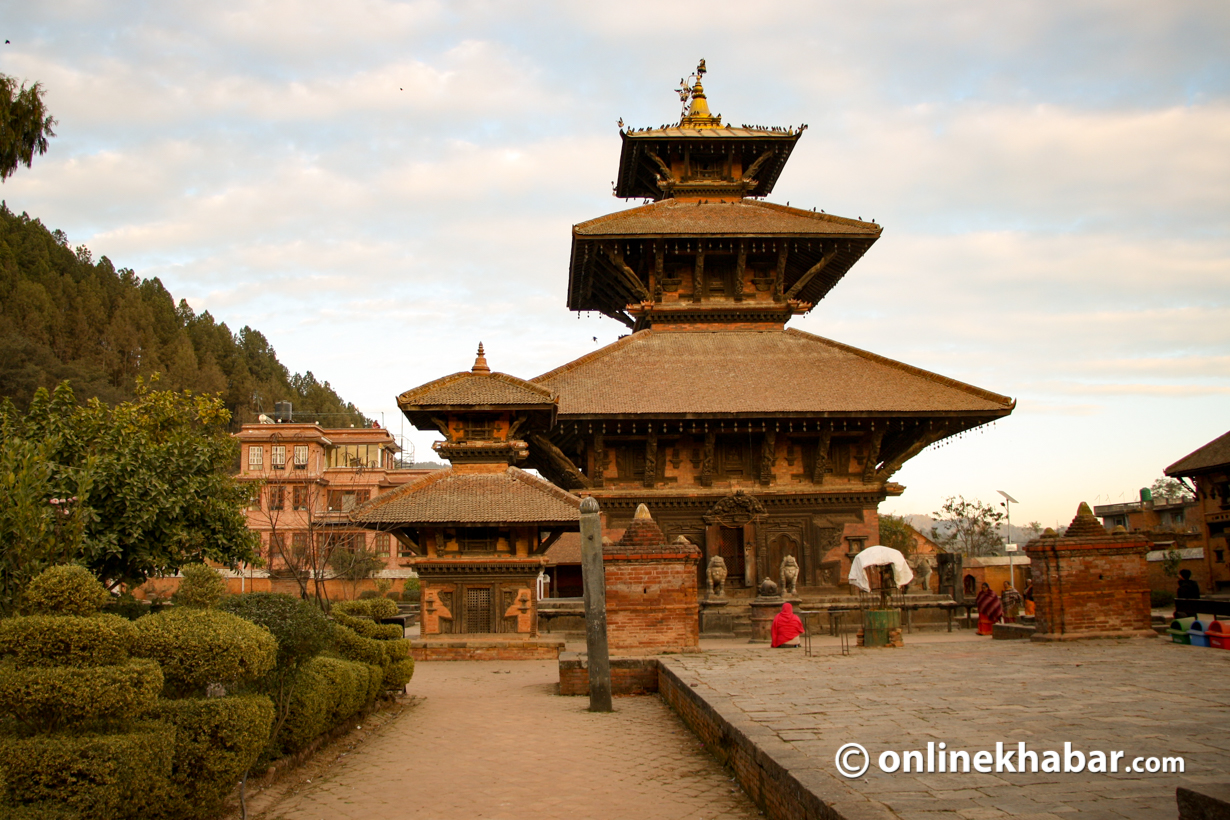
To successfully nominate a site for inclusion on the UNESCO World Heritage list, several key processes must be followed. The site must demonstrate Outstanding Universal Value (OUV) and adequately represent both tangible and intangible cultural heritage. OUV considers factors such as the site’s uniqueness, authenticity, and integrity, as well as its cultural or natural significance on a global scale.
“Panauti has all that in abundance,” says Puri who says the town holds a unique and rich identity deeply rooted in its cultural heritage and historical significance.
Purushottam Karmacharya, president of the Panauti Tourism Development Centre says the city is an open museum where every brick and every house narrates tales of the past.
“Panauti gets its name from Palanti, which in Nepal Bhasa signifies the need to step foot in the city at least once (Palaa ti) in a lifetime to cleanse one’s sins. This spiritual aspect adds another layer to Panauti’s identity, drawing pilgrims and seekers from far and wide,” he says.

Another myth surrounding the city involves locals believing that Gautam Rishi, a revered Vedic sage, cursed Indra (God of Rain), leading him to come to Panauti to repent for his sins. At Triveni Ghat, Shiva infused the nectar of healing into the waters of Rudrawati. Upon bathing in this sacred river, Indra immediately recovered. Legend has it that every 12 years, the river carries the healing nectar, believed to cure all diseases.
“That is why people come here every 12 years and take part in the Barhabarse Makar Mela,” says Karmacharya.
Another famous legend is the story of Lord Rama and Ahilya, where Rama, the seventh avatar of the Hindu god Vishnu, restores Ahilya to her human form after she was cursed to become a stone due to a misunderstanding.
Apart from all this, Karmacharya says Panauti’s legend speaks of its generosity and community spirit. According to folklore, when it faced a water shortage, a Panauti farmer and the Lalitpur king went to goddess Phulchowki to ask for water. While the Lalitpur king brought gold and jewels, the farmer from Panauti took mustard flowers (yellow) and radish flowers (white) representing the necessity for water for irrigation in the region.
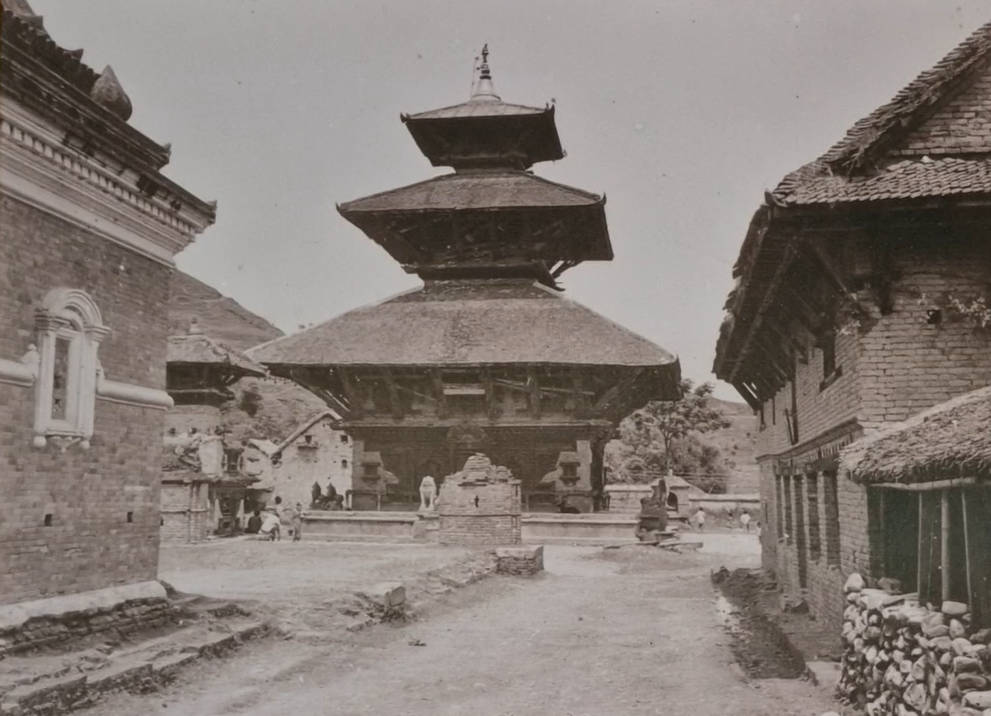
“Other than the year-round festivals including the legendary Makar Mela, the intangible heritage of music, dance and other important festivals make Panauti unique. According to folklores, both the Kumari (Living Goddess) and Taleju first entered the valley through Panauti,” says Bhandari.
Puri, meanwhile, also highlights the historical importance of Panauti, highlighting the belief that the Indreshwar Mahadev temple, built in the 13th century, is the oldest temple in Nepal.
“This is why we are pushing for Panauti to be enlisted to the world heritage site list,” says Puri.
It has other revered sites such as Unmatta Bhairav and Bhadrakali temples that enhance cultural significance. Basuki Naag temple and the Tulanarayan Mandir (with a standing Vishnu statue), add to the allure of Panauti’s cultural landscape.
Considering all Karmacharya insists that Panauti should be enlisted as a UNESCO World Heritage site else it will be a big loss for both the locals and the nation.
Challenges or opportunities
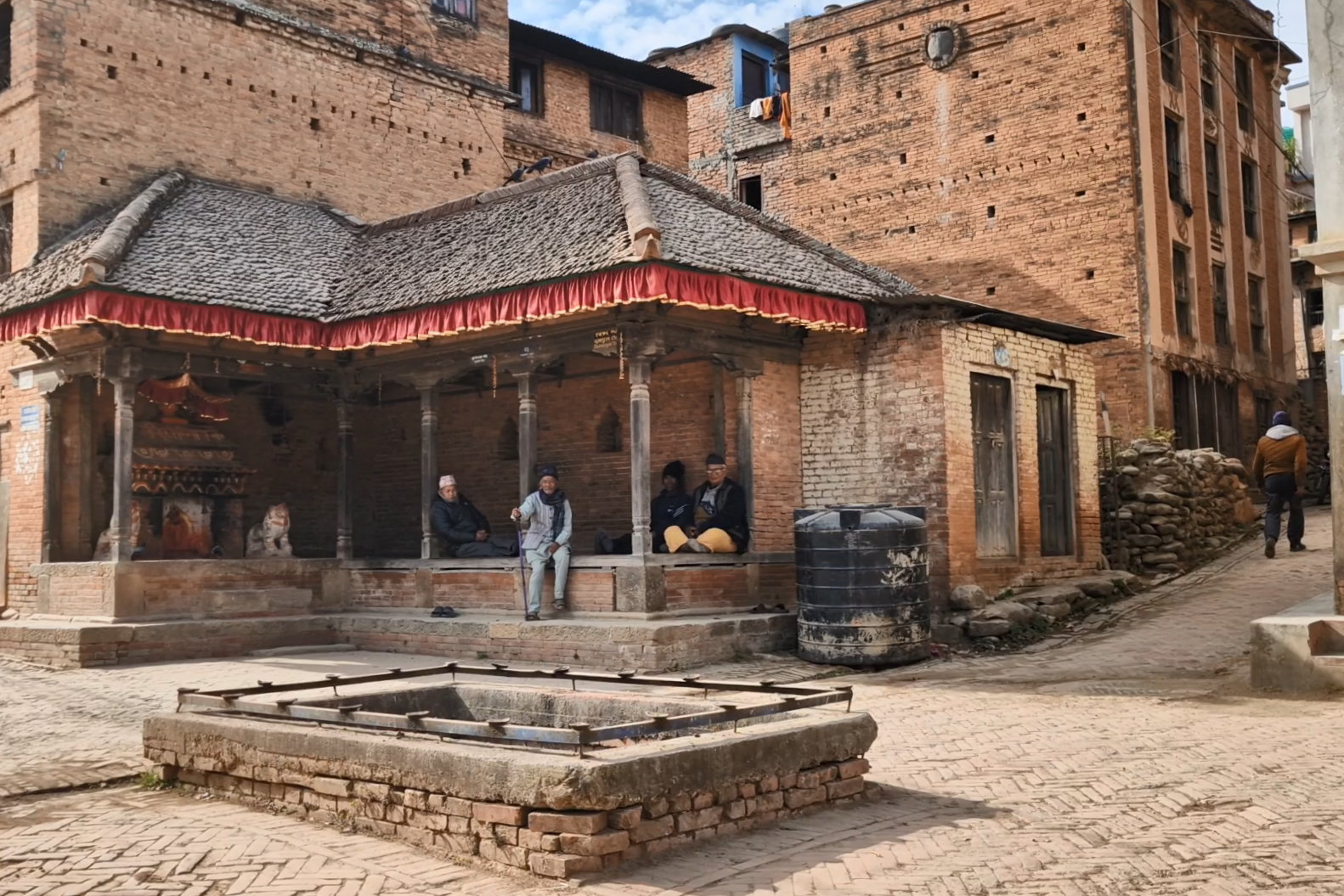
Despite its abundant heritage, Panauti has yet to be effectively marketed to a wider audience, leaving its treasures relatively undiscovered, says Bhandari.
However, the municipality and the locals are determined not to let the opportunity slip away, plans were set in motion to mobilise resources and skills. The task at hand is crucial, as a delegation from UNESCO would soon arrive to assess the site’s eligibility for inclusion on the prestigious World Heritage list.
“We had plans to enlist Panauti first. But now Tilaurakot is all set to be announced in the list. Panauti will be next,” says Puri.
Through community discussions and information dissemination initiatives emphasising the importance of UNESCO listing, awareness has gradually increased. While progress may not be as swift as some locals anticipate or as slow as others fear, the focus remains on fostering understanding and engagement within the community.
Bhandari however notes that the lack of effective coordination and integration between the local and provincial governments has further complicated matters.
“Issues such as cleaning the Punyamati River and ensuring alternative routes for vehicles carrying mining materials are a concern for now. Meanwhile, we want the provincial government to be involved in this too,” he says.
Karmarcharya also points out that the cultural city has seen some encroachment and some concerns about urbanisation, which have dented the holistic picture they want to paint suitable for the UNESCO heritage site. To counter this, he says, the local government is incentivising people to build houses in traditional architecture or at least maintain a traditional facade to preserve Panauti’s cultural heritage.
Puri has also observed how some individuals are still obsessing over how the enlistment will restrict them from building concrete houses.
“There will always be people like this. But people, especially the younger generation, are understanding what we are trying to do,” he says.
What next?

Enlistment as a UNESCO World Heritage site holds promise for Panauti, offering increased recognition on the global stage and elevating its cultural and social identity. Locals are optimistic about the potential benefits, foreseeing greater government accountability and increased investment in tourism infrastructure.
According to Raman Sonam, operator of Hotel Panauti, a majority of tourists who reach the town come for sightseeing during the day or while returning from nearby hikes from Dhulikhel, Balthali, or Namobuddha.
“Only 10 per cent stay the night with exceptions of those who have projects or surveys,” says Sonam.
Rama Karmacharya, co-owner of Paaha Chhen, says it is a challenge to keep these tourists at Panauti for longer.
“We need to start showcasing our local culture, food, and handicrafts and spread the word that Panauti is worth visiting. Being declared a world heritage site can surely put us on the global map,” he says.
Purushottam Karmacharya says that with better access, Panauti was ready to host more people. He says that although the number of international tourists remains modest, at approximately 1,500 per month, there has been a notable increase in domestic tourism.
“The enlistment could bring more tourists to Panauti,” says Puri. “Locals are looking forward to how it will help boost the local economy. However, the influx of tourists should be handled with infrastructure development in line with the idea of sustainable tourism.”

Locals believe expanding hotel accommodations and tourism activities could further enhance the visitor experience, encouraging longer stays and boosting the local economy. However, Bhandari says there is no point rushing to do this.
“The investors will see the potential and invest in the town. So, it is essential to strike a balance and ensure that growth is sustainable and respectful of Panauti’s cultural heritage,” says Bhandari. “Ultimately, enlistment as a UNESCO World Heritage site could provide the necessary impetus to unlock Panauti’s full tourism potential, benefiting both locals and visitors alike.”
Puri also stresses the need to conserve cultural heritage continuously, both before and after enlistment, to prevent sites from being endangered, as observed in heritage sites worldwide.
“We are blessed with abundant natural and cultural heritage. The Kathmandu Valley, once considered a heritage site in its entirety, has sadly witnessed significant destruction over the past five decades, with approximately 90 per cent of its heritage lost. So we need to preserve and promote Panauti accordingly,” says Puri.
Mayor Bhandari agrees, “Regardless of UNESCO heritage site enlistment, the preservation of heritage, language, and cultural identity remains paramount.”






